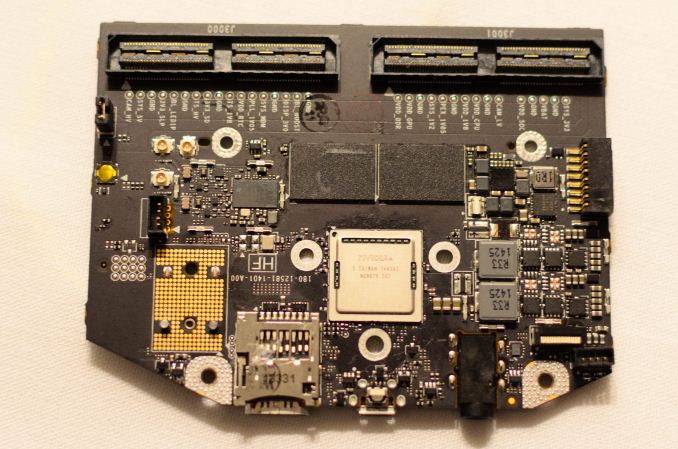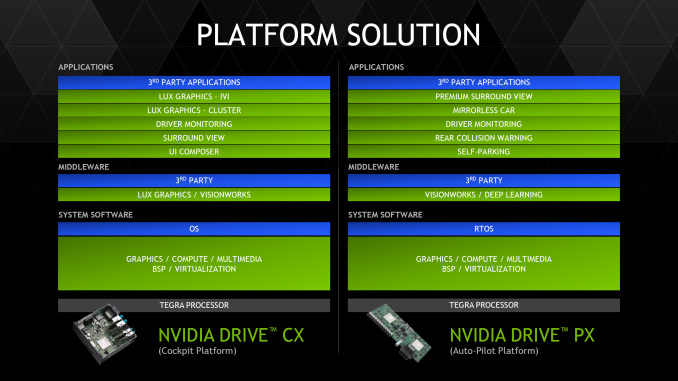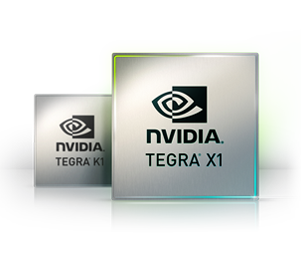NVIDIA Tegra X1 Preview & Architecture Analysis
by Joshua Ho & Ryan Smith on January 5, 2015 1:00 AM EST- Posted in
- SoCs
- Arm
- Project Denver
- Mobile
- 20nm
- GPUs
- Tablets
- NVIDIA
- Cortex A57
- Tegra X1
Final Words
With the Tegra X1, there have been a great deal of changes when compared to Tegra K1. We see a move from Cortex A15 to A57 on the main cluster, and a move from a single low power Cortex A15 to four Cortex A53s which is a significant departure from previous Tegra SoCs. However, the CPU design remains distinct from what we see in SoCs like the Exynos 5433, as NVIDIA uses a custom CPU interconnect and cluster migration instead of ARM’s CCI-400 and global task scheduling. Outside of these CPU changes, NVIDIA has done a great deal of work on the uncore, with a much faster ISP and support for new codecs at high resolution and frame rate, along with an improved memory interface and improved display output.
Outside of CPU, the GPU is a massive improvement with the move to Maxwell. The addition of double-speed FP16 support for the Tegra X1 helps to improve performance and power efficiency in applications that will utilize FP16, and in general the mobile-first focus on the architecture makes for a 2x improvement in performance per watt. While Tegra K1 set a new bar for mobile graphics for other SoC designers to target, Tegra X1 manages to raise the bar again in a big way. Given the standards support of Tegra X1, it wouldn’t be a far leap to see more extensive porting of games to a version of SHIELD Tablet with Tegra X1.
NVIDIA has also made automotive applications a huge focus in Tegra X1 in the form of DRIVE CX, a cockpit computing platform, and DRIVE PX, an autopilot platform. Given the level of integration and compute present in both DRIVE CX and PX, there seems to be a significant amount of value in NVIDIA’s solutions. However, it remains to be seen whether OEMs will widely adopt these solutions as car manufacturers can take multiple years to implement a new SoC. Compared to the 3-4 month adoption rate of an SoC in a phone or tablet, it's hard to pass any judgment on whether or not NVIDIA's automotive endeavors will be a success.
Overall, Tegra X1 represents a solid improvement over Tegra K1, and now that NVIDIA has shifted their GPU architectures to be targeted at mobile first, we’re seeing the benefits that come with such a strategy. It seems obvious that this would be a great SoC to put in a gaming tablet and a variety of other mobile devices, but it remains to be seen whether NVIDIA can get the design wins necessary to make this happen. Given that all of the high-end SoCs in the Android space will be shipping with A57 and A53 CPUs, the high-end SoC space will see significant competition once again.













194 Comments
View All Comments
Morawka - Monday, January 5, 2015 - link
omg i'm gonna go buy some nvidia stock now. Not because of the X1, but because of the Automotive platforms.iwod - Monday, January 5, 2015 - link
That is some impressive GPU performance / watt. However I think LPDDR4 with double the bandwidth do help the performance on X1. But even with the accounted difference the A8X GPU still does not hold up against Maxwell, assuming Nvidia benchmarks can be trusted.It should be noted that the A8X is partly a custom GPU from Apple. Since it doesn't come directly off IMG, and it is likely not as power efficient as possible.
junky77 - Monday, January 5, 2015 - link
Where's AMD in all this thing..chizow - Monday, January 5, 2015 - link
They're not in the discussion, blame Dirk "Not Interested in Netbooks" Meyer for that one.junky77 - Monday, January 5, 2015 - link
:(But all the other stuff showed here - vehicles and stuff (not that I think there will be a good AI in 2017, but still)
GC2:CS - Monday, January 5, 2015 - link
This chip looks awesome, but so was all tegras before.Like the tegra k1, a huge annoncement supposed to bring "revolution" to mobile graphics computing. That turned out to be a power hog, pulling so much power it was absolutelly unsuitable for any phone and it's also throotling significally.
This looks like the same story yet aggain, lots of marketing talk, lots of hype, no promise delivered.
pSupaNova - Monday, January 5, 2015 - link
Nothing wrong with the Tegra K1 in both forms, I have a Shield Tablet and Nexus 9.I have a Program that I changed so I can run https://www.shadertoy.com/ shaders natively and both tablets are impressively fast.
Nvidia just need to make sure they run on the same process as Apple and they will have the fastest SOC CPU and GPU wise.
techconc - Tuesday, January 6, 2015 - link
Apple is expected to move to 14nm for the A9. That's just speculation, but given Apple position in the supply chain as opposed to nVidia's I would be surprised if nVidia was able to be on the same process. With regards to CPUs, since nVidia has regressed from the Denver core to the standard reference designs, I wouldn't expect nVidia to have any CPU advantage. Certainly not with single threaded apps anyway. As for the GPU, the Rogue 7 series appears to be more scalable with up to 512 "cores". If the X1 chip has any GPU advantage it would not be for technical reasons. Rather it would be because Apple chose to scale up to that level. Given that Apple has historically chosen rather beefy GPUs, I would again be surprised if they allowed the X1 to have a more powerful GPU. We'll see.kron123456789 - Monday, January 5, 2015 - link
"it's also throotling significally." — Um, no. It has throttling under heavy load but it's about 20% in worst case. It was Snapdragon 800/801 and Exynos 5430 that "throotling significally".jwcalla - Monday, January 5, 2015 - link
The fact that the announcement for this chip was coordinated with an almost exclusive discussion about automotive applications -- and correct me if I'm wrong, but it does not appear they even discussed gaming or mobile applications, except for the demo -- could be a signal that indicates to which markets NVIDIA wants to focus Tegra and which markets they're abandoning.A couple years back Jen-Hsun said that Android was the future of gaming, but I wonder if he still believes that today?
I do think there is some truth to the idea that there is not much of a consumer market for high-end mobile graphics. Other than making for a great slide at a press event (Apple), there doesn't seem to be much of a use case for big graphics in a tablet. The kind of casual games people play there don't seem to align with nvidia's strengths.